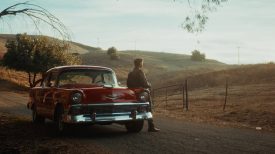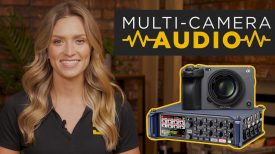The cult of Ifa is at the heart of the voodoo tradition, both in West Africa and the diaspora. This short film, made while working on a photo reportage in Benin, offers a rare glimpse into the world of the “babalawo”, the initiate and priest of Ifa. Because I have been going back to the same town for so many years now, people are used to my presence. I am no longer exotic. They also know that I am interested in, and have respect for, their traditions.
It’s impossible to say anything in depth about such a complex, rich and ancient tradition in a few minute’s video – which is why I haven’t tried to do so. All I wanted was to give an idea of the atmosphere during sacrifice and consultation.
The video shows how the “fetishes”, or Orishas, Legba, Shango and Ogun are installed. We then see babalawos and their clients involved in parts of rituals of divination and sacrifice. Those familiar with the subject will recognize the processes here. Everyone else can just take in some of the atmosphere of these fragments.
Ifa Fragments from David Paul Carr on Vimeo.
I asked two of the babalawos to speak to camera for a couple of minutes about Ifa, suggesting that as it was impossible to go into detail, they should try to present simply a couple of key ideas that would be useful for a stranger unfamiliar with the subject. After each take a friend translated into French for me more or less what was said so I knew if I had what I needed. I hope this film will be the beginning of a larger project, which would allow me to document the world of Ifa and the voduns in greater detail.
I’m an English photographer based in Paris and usually I work for big companies, public institutions and NGOs. This year I’ve done stories on the homeless population of Saint Petersburg, Russia, Haitian peasants and, most recently, nutrition in Benin. My impression is that the French – at least the people I deal with – are a little behind when it comes to using video on the web. This can be frustrating and I have ended up shooting a lot of stuff for myself just to show clients what can be done. It’s an investment and a very time-consuming one. Essentially, I have to find a way of doing two jobs – stills and video – when there’s only really time for one.
I am convinced that it’s only a matter of time before the divisions between photography, video, etc will become completely blurred. As computers become cheaper and more powerful and video resolution and frame rates increase it will become easier and easier to grab quality frames from moving images. And when raw video becomes more accessible that quality will only get better and better. In 2009 one of my corporate clients shot a very expensive TV commercial campaign and made excellent billboard-size ads from the video footage. When I saw that I realized that everything was going to change…
I’m also convinced that filming stuff is not at all the same as making a film. For a photographer like me there is a whole new (and for me very exciting) set of skills to learn. Having a DSLR that shoots video is absolutely not enough…
One of my motivations for starting to make videos was the fact that so much of what I saw and heard when on assignments couldn’t be captured in stills. Video allows me to record things that would previously have gone unrecorded. It sounds obvious but for me it’s quite magical.
Because I work alone, I have to be very careful about how much gear I bring. Carry-on baggage limitations are a nightmare for me: I was taught never to let my essential kit out of my sight and my biggest fear is arriving somewhere without the tools I need to get the job done. So what I use on foreign trips is always something of a compromise and I try to reduce what I take as much as possible. I dislike having more kit than I can (fairly) comfortably carry by myself.
For Benin I used a very simple kit:
Canon 5DmkII.
24-105mm f4L (I had a 35mm lens as well but didn’t use it)
Manfrotto tripod with video head.
A lightweight Velbon monopod.
Fader ND filters.
Rode Videomic.
Zoom H1 audio recorder on a Gorillapod (I have an H4N but decided it was too bulky to
take with me).
Zacuto Z-Finder.
An Olympus EPL1 with the kit zoom lens and Panasonic 20mm f1.7 lens. (This is my backup camera, which I use with the Z-Finder.)
I had the Magic Lantern hack installed on the Canon but had some problems with it that I suspect were more due to my inexperience than anything else. The false colours for setting exposure are great!
Editing was done in Adobe Premiere Pro. I have Final Cut but currently prefer PP. I had a cheap 11 inch i3 Acer Timeline X laptop with me (the Macs stay at home) and had installed PP just before leaving. I was amazed that I could start editing on that machine. OK, it wasn’t very fast and render times were frankly slow, but it meant that I could use all the down-time during the trip to get started putting the video together.
It took me a long time to figure out that taking a series of photographs doesn’t mean you have a story. With video this is even more the case. When on a stills job, I try to identify what – given all the limitations I have to deal with – I can manage to film that might become a coherent whole, and then concentrate on only doing that rather than over-filming and discovering in the end that I have nothing to work with (which is very, very easy to do).
A long time ago I worked as assistant to Terence Donovan. Many years later, a little to my surprise, the experience I had of film shoots with him has helped me approach working with video.
Finally, two sources of inspiration for me: http://en.wikipedia.org/wiki/Abbas_Kiarostami film ABC Africa and something I heard the Turkish director Nuri Bilge Ceylan once say in reply to a question about going to film school: “Look, today if you really want to make a film there’s nothing to stop you”.
About David Paul Carr
David Paul Carr is an English photographer based in Paris, France. His work includes editorial, corporate, institutional and NGO photography.
http://www.davidpaulcarr.com/






